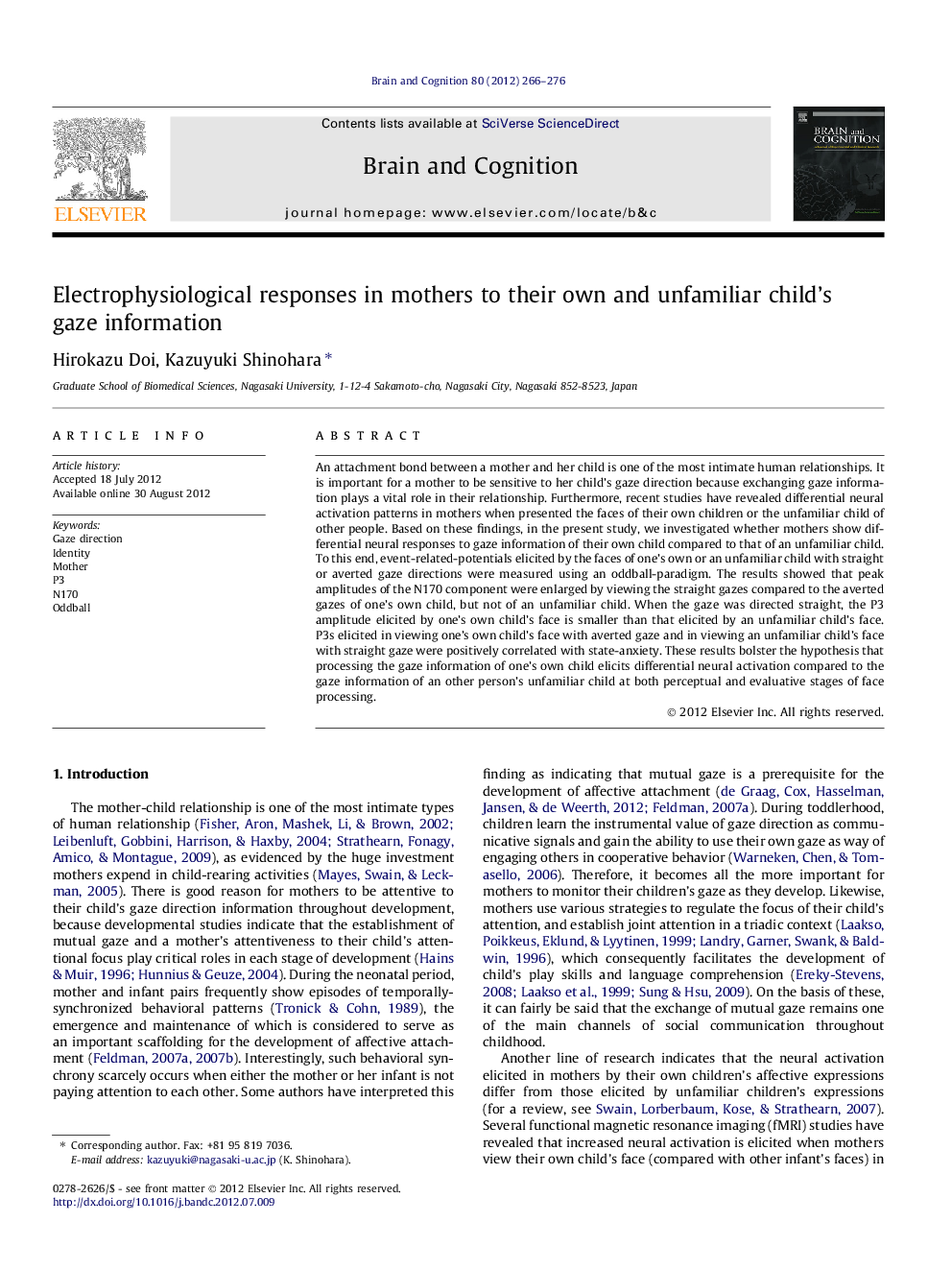| کد مقاله | کد نشریه | سال انتشار | مقاله انگلیسی | نسخه تمام متن |
|---|---|---|---|---|
| 924693 | 921256 | 2012 | 11 صفحه PDF | دانلود رایگان |

An attachment bond between a mother and her child is one of the most intimate human relationships. It is important for a mother to be sensitive to her child’s gaze direction because exchanging gaze information plays a vital role in their relationship. Furthermore, recent studies have revealed differential neural activation patterns in mothers when presented the faces of their own children or the unfamiliar child of other people. Based on these findings, in the present study, we investigated whether mothers show differential neural responses to gaze information of their own child compared to that of an unfamiliar child. To this end, event-related-potentials elicited by the faces of one’s own or an unfamiliar child with straight or averted gaze directions were measured using an oddball-paradigm. The results showed that peak amplitudes of the N170 component were enlarged by viewing the straight gazes compared to the averted gazes of one’s own child, but not of an unfamiliar child. When the gaze was directed straight, the P3 amplitude elicited by one’s own child’s face is smaller than that elicited by an unfamiliar child’s face. P3s elicited in viewing one’s own child’s face with averted gaze and in viewing an unfamiliar child’s face with straight gaze were positively correlated with state-anxiety. These results bolster the hypothesis that processing the gaze information of one’s own child elicits differential neural activation compared to the gaze information of an other person’s unfamiliar child at both perceptual and evaluative stages of face processing.
► Electrophysiological study on interaction between gaze direction and facial identity.
► Interaction between identity and gaze information at multiple face processing stages.
► Modulation of P3 amplitudes was specifically linked to participants’ anxiety.
Journal: Brain and Cognition - Volume 80, Issue 2, November 2012, Pages 266–276